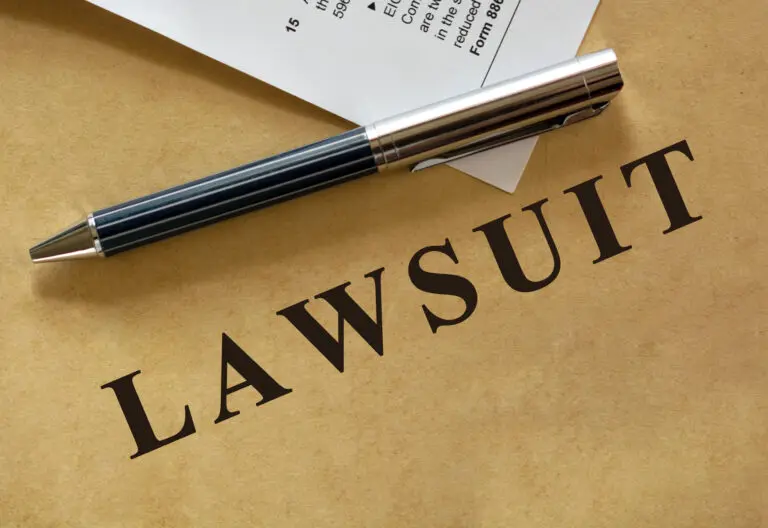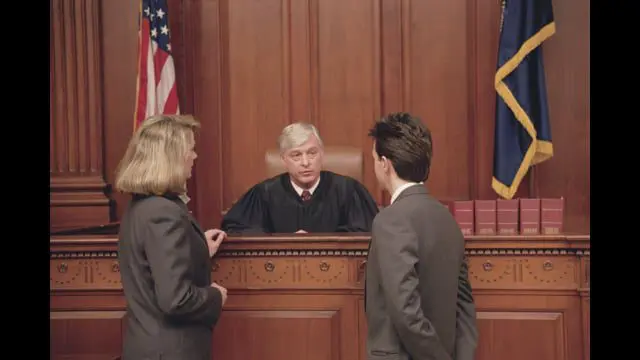In recent years, the burden of student loan debt has become an increasingly pressing issue for millions of Americans. As the cost of higher education continues to rise, more students are forced to rely on loans to finance their education, leading to a growing crisis that affects individuals, families, and the broader economy. This article explores the various legal options available for student loan debt relief, including federal programs, private sector initiatives, and potential legislative solutions.
The scale of the student loan debt problem in the United States is staggering. As of 2025, the total outstanding student loan debt has reached an unprecedented $1.7 trillion, affecting over 45 million borrowers. This massive debt burden has far-reaching consequences, impacting everything from career choices and homeownership to retirement savings and overall economic growth. The need for effective alivio de la deuda solutions has never been more urgent.
One of the primary avenues for student loan alivio de la deuda is through federal programs. The U.S. Department of Education offers several income-driven repayment plans that can help borrowers manage their debt by capping monthly payments based on income and family size. These plans include Income-Based Repayment (IBR), Pay As You Earn (PAYE), Revised Pay As You Earn (REPAYE)y Income-Contingent Repayment (ICR). Each of these plans has specific eligibility requirements and terms, but they all aim to make student loan payments more manageable for borrowers struggling with high debt-to-income ratios.
En Income-Based Repayment plan, for instance, caps monthly payments at 10% or 15% of discretionary income, depending on when the borrower first received their loans. After 20 or 25 years of qualifying payments, any remaining balance is forgiven. Similarly, the Pay As You Earn plan limits payments to 10% of discretionary income and offers forgiveness after 20 years. These plans can provide significant relief for borrowers, particularly those with high debt loads relative to their income.
Another important federal program for student loan debt relief is Public Service Loan Forgiveness (PSLF). This program is designed to encourage individuals to pursue careers in public service by offering loan forgiveness after 120 qualifying monthly payments while working full-time for a government organization or eligible non-profit. PSLF can be a powerful tool for debt relief, potentially forgiving substantial amounts of student loan debt for those who dedicate their careers to public service.
However, the PSLF program has faced criticism and challenges since its inception. Many borrowers have reported difficulties in navigating the complex requirements and application process, leading to high rejection rates for forgiveness applications. In response to these issues, the Department of Education has implemented several reforms and temporary expansions to the program, aiming to make it more accessible and effective for eligible borrowers.
For borrowers in specific professions, there are additional targeted loan forgiveness programs. The Teacher Loan Forgiveness Program, for example, offers up to $17,500 in forgiveness for highly qualified teachers who work in low-income schools for five consecutive years. Similarly, there are loan repayment assistance programs for healthcare professionals, lawyers, and other specialized fields, often tied to service in underserved areas or public interest work.
While federal programs offer significant opportunities for debt relief, they are not without limitations. Many borrowers find themselves ineligible for these programs due to the type of loans they hold or their specific employment situations. Additionally, the long-term nature of many forgiveness programs means that borrowers may be burdened with debt for decades before seeing relief.
In light of these challenges, there has been growing advocacy for more comprehensive student loan debt relief measures. Some policymakers and activists have called for broad-based student loan forgiveness, arguing that it would provide immediate relief to millions of borrowers and stimulate economic growth. Proposals have ranged from forgiving $10,000 per borrower to canceling all federal student loan debt.
The debate over broad student loan forgiveness has been contentious, with proponents arguing that it would address a critical economic issue and provide relief to struggling borrowers, while critics contend that it would be costly and potentially unfair to those who have already paid off their loans or chose not to take on debt for education. The legal authority for such widespread forgiveness has also been questioned, with some arguing that it would require congressional action rather than executive order.
In addition to federal initiatives, some states have implemented their own student loan assistance programs. These programs often target specific professions or aim to attract skilled workers to the state. For example, some states offer loan repayment assistance for teachers, healthcare workers, or STEM professionals who commit to working in the state for a certain period. While these programs are typically smaller in scale than federal initiatives, they can provide valuable relief for eligible borrowers.
The private sector has also begun to play a role in addressing the student loan debt crisis. Some employers now offer student loan repayment assistance as an employee benefit, recognizing the burden that education debt places on their workforce. These programs typically involve the employer making direct payments towards an employee’s student loans, often with a monthly or annual cap. While not as widespread as traditional benefits like health insurance or retirement plans, student loan assistance is becoming an increasingly attractive option for companies looking to recruit and retain talent.
For borrowers with private student loans, options for relief can be more limited. Unlike federal loans, private loans are not eligible for income-driven repayment plans or federal forgiveness programs. However, some private lenders offer their own hardship programs or flexible repayment options for borrowers experiencing financial difficulties. These may include temporary forbearance, interest rate reductions, or extended repayment terms.
Refinanciación is another option for borrowers with private student loans, and in some cases, for those with federal loans as well. By refinancing, borrowers may be able to secure a lower interest rate or more favorable repayment terms. However, it’s important to note that refinancing federal loans into private loans means losing access to federal benefits and protections, including income-driven repayment plans and potential loan forgiveness.
The legal landscape surrounding student loan debt relief is complex and evolving. Recent years have seen numerous lawsuits and legal challenges related to student loan servicing practices, forgiveness programs, and the broader issue of student debt. For instance, there have been class action lawsuits against loan servicers for alleged mismanagement of repayment plans and forgiveness programs, as well as legal challenges to the Department of Education’s authority to cancel student debt on a large scale.
One significant legal development in the realm of student loan debt relief is the potential for discharge through bankruptcy. Historically, student loans have been notoriously difficult to discharge in bankruptcy proceedings, requiring borrowers to demonstrate “undue hardship” – a standard that has been interpreted very narrowly by courts. However, there have been recent efforts to make student loan discharge in bankruptcy more accessible.
En Código de quiebra currently treats student loans differently from most other types of debt, making them non-dischargeable unless the borrower can prove undue hardship. This high bar has meant that very few borrowers have successfully discharged their student loans through bankruptcy. However, there have been proposals in Congress to amend the Bankruptcy Code to treat student loans more like other forms of consumer debt, potentially making discharge more attainable for struggling borrowers.
Some courts have also begun to interpret the undue hardship standard more leniently, recognizing the severe financial strain that student loan debt can place on individuals. For example, in 2020, a federal appeals court ruled that a borrower could discharge his student loans in bankruptcy, citing his good-faith efforts to repay and the impact of the debt on his ability to maintain a minimal standard of living. While this case does not set a binding precedent for all courts, it signals a potential shift in how the legal system views student loan debt in bankruptcy proceedings.
The issue of student loan servicing has also been a focus of legal scrutiny. Loan servicers, the companies that manage federal student loans on behalf of the Department of Education, have faced numerous lawsuits and investigations over alleged misconduct. These legal actions have accused servicers of steering borrowers into forbearance instead of more beneficial income-driven repayment plans, mishandling applications for loan forgiveness, and providing inaccurate information to borrowers.
In response to these issues, some states have enacted Student Loan Borrower Bills of Rights, which establish standards for loan servicers operating within the state and provide additional protections for borrowers. These laws typically require servicers to be licensed, prohibit certain unfair or deceptive practices, and establish a student loan ombudsman to assist borrowers with complaints and concerns.
The legal framework surrounding student loan debt relief is also influenced by federal regulations and guidance issued by the Department of Education. These regulations can have a significant impact on how forgiveness programs are implemented and how borrowers’ rights are protected. For example, in recent years, there have been regulatory changes aimed at streamlining the process for discharging loans for borrowers whose schools closed or engaged in misconduct (Borrower Defense to Repayment).
En Borrower Defense to Repayment program allows students to have their federal loans discharged if their school misled them or engaged in other misconduct in violation of certain state laws. This program has been the subject of considerable legal and political controversy, with changes in administration leading to shifts in how claims are evaluated and processed. The implementation and interpretation of this program highlight the complex interplay between law, policy, and administrative action in the realm of student loan debt relief.
Another area of legal consideration is the prescripción on student loan debt. While federal student loans do not have a statute of limitations, private student loans may be subject to state-specific limitations periods. This means that after a certain amount of time, typically between three to ten years depending on the state, a lender may lose the ability to sue a borrower for unpaid private student loan debt. However, it’s important to note that this does not mean the debt is forgiven or that the lender cannot attempt to collect through other means.
The intersection of student loan debt and consumer protection law is another important legal aspect to consider. The Consumer Financial Protection Bureau (CFPB) plays a significant role in overseeing student loan servicers and protecting borrower rights. The CFPB has the authority to bring enforcement actions against servicers for unfair, deceptive, or abusive practices, and has done so in several high-profile cases.
In addition to federal consumer protection laws, many states have their own consumer protection statutes that may apply to student loan servicing and collection practices. These laws can provide additional avenues for borrowers to seek relief if they believe their rights have been violated.
The legal implications of student loan debt extend beyond just the borrower and lender relationship. For instance, there are important considerations regarding the tax treatment of forgiven student loan debt. Generally, forgiven debt is treated as taxable income by the IRS. However, there are exceptions for certain types of student loan forgiveness, such as PSLF and forgiveness under income-driven repayment plans after 20 or 25 years of payments.
The tax implications of student loan forgiveness have been a point of concern for many borrowers and policymakers. There have been legislative efforts to exclude more types of student loan forgiveness from taxation, recognizing that a large tax bill could negate much of the benefit of loan forgiveness for struggling borrowers.
Another legal aspect of student loan debt relief involves the Fair Credit Reporting Act (FCRA). This federal law governs how credit reporting agencies handle consumer information, including student loan data. Borrowers have rights under the FCRA to dispute inaccurate information on their credit reports, which can be crucial for those seeking to improve their financial situation after struggling with student loan debt.
The legal landscape of student loan debt relief is also influenced by international comparisons and potential policy innovations. Many other countries have implemented different approaches to financing higher education and managing student debt, which could inform future legal and policy changes in the United States. For example, some countries use income-contingent loan systems where repayment is automatically tied to income, or have implemented free or heavily subsidized higher education systems.
As the student loan debt crisis continues to evolve, new legal challenges and potential solutions are likely to emerge. For instance, there has been growing interest in exploring alternative financing models for higher education, such as Income Share Agreements (ISAs). These agreements, where students pledge a percentage of their future income in exchange for funding their education, raise novel legal questions about their classification, regulation, and consumer protections.
El papel de state law in student loan debt relief is also an area of ongoing development. While federal law largely governs federal student loans, states have been increasingly active in regulating private student loans and loan servicers. Some states have established their own student loan ombudsman offices, enacted licensure requirements for student loan servicers, and passed laws providing additional protections for student loan borrowers.
The legal framework surrounding student loan debt relief must also contend with the rapid pace of technological change in the financial sector. The rise of financial technology (fintech) companies offering innovative repayment and refinancing options for student loans has introduced new legal and regulatory challenges. These include questions about data privacy, algorithmic decision-making in lending, and the application of existing financial regulations to new business models.
As policymakers and legal experts grapple with the complexities of student loan debt relief, there is growing recognition of the need for comprehensive reform. This may involve not only changes to existing programs and regulations but also a fundamental rethinking of how higher education is financed and how the risks and costs are distributed among students, institutions, and society at large.
The legal options for student loan debt relief are diverse and continually evolving. From federal forgiveness programs and income-driven repayment plans to state-level initiatives and private sector solutions, there are multiple avenues for borrowers seeking relief. However, navigating these options often requires careful consideration of individual circumstances and an understanding of the complex legal landscape.
As the national conversation around student loan debt continues, it is likely that we will see further legal and policy developments aimed at addressing this pressing issue. Whether through legislative action, regulatory reform, or innovative private sector solutions, the search for effective and equitable ways to provide student loan debt relief remains a critical challenge for our legal system and society as a whole.
Ultimately, the legal framework for student loan debt relief must balance the needs of borrowers struggling under the weight of education debt with broader considerations of fiscal responsibility and educational access. As we move forward, it will be crucial to continue refining and expanding legal options for relief while also addressing the root causes of the student debt crisis, including the rising costs of higher education and the mismatch between education costs and post-graduation earnings potential.
The ongoing evolution of student loan debt relief options underscores the importance of financial literacy and informed decision-making for students and families considering higher education financing. Legal and financial advisors play a crucial role in helping individuals understand their rights, obligations, and options when it comes to managing student loan debt.
As we look to the future, it is clear that the legal landscape of student loan debt relief will continue to be shaped by a complex interplay of federal and state legislation, regulatory action, judicial decisions, and market forces. Staying informed about these developments and understanding one’s legal rights and options will be essential for anyone navigating the challenges of student loan debt in the years to come.
Fuentes:
- https://studentaid.gov/manage-loans/forgiveness-cancellation
- https://www.consumerfinance.gov/consumer-tools/student-loans/
- https://www.congress.gov/bill/117th-congress/house-bill/4797
- https://www.americanbar.org/groups/legal_aid_indigent_defense/loan_repayment_assistance_programs/
- https://www.nasfaa.org/news-item/34924/ED_Releases_Proposed_Student_Loan_Debt_Forgiveness_Regulations_for_Borrowers_Experiencing_Hardship
- https://www.ed.gov/higher-education/manage-your-loans/student-loans-forgiveness-us-department-of-education
- https://www.wsj.com/personal-finance/credit/student-loan-payment-relief-7193f3cc
- https://www.americanprogress.org/article/tracker-student-loan-debt-relief-under-the-biden-harris-administration/









